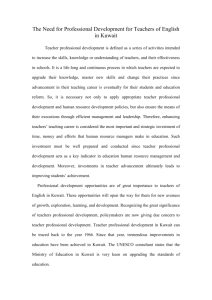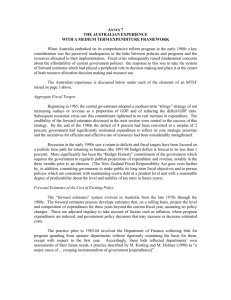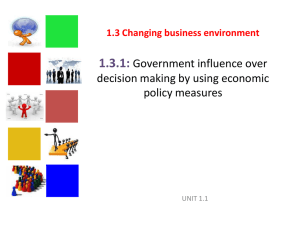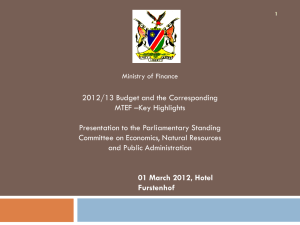Kuwait: From Reconstruction to Accumulation for Future Generations
advertisement
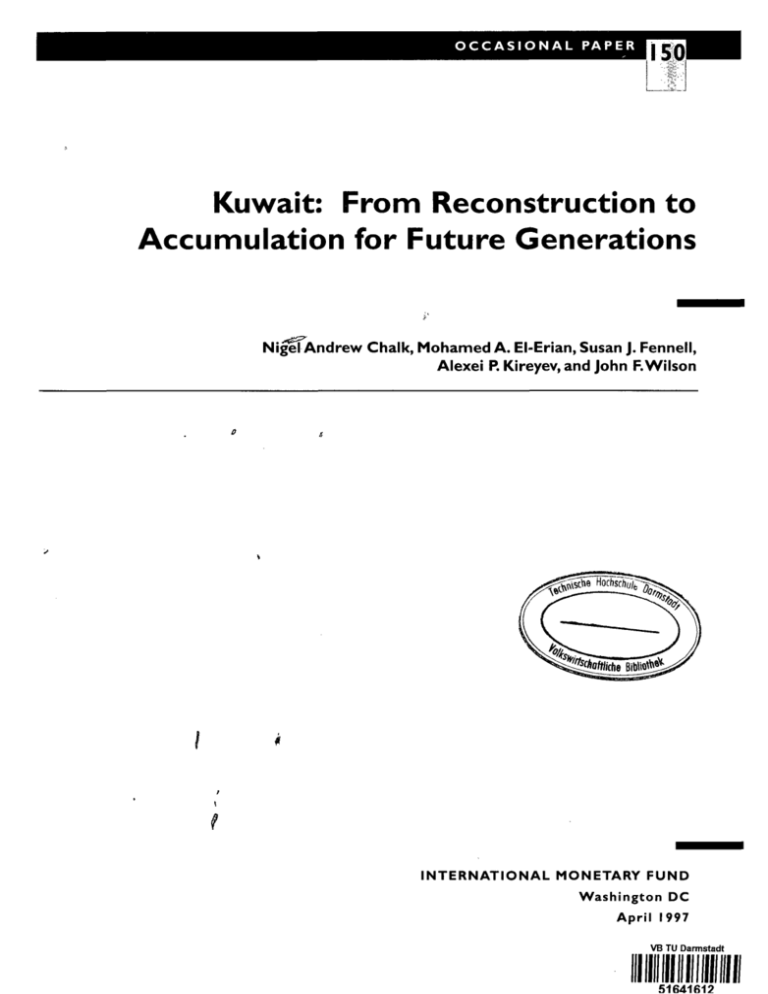
OCCASIONAL PAPER •IS-. Kuwait: From Reconstruction to Accumulation for Future Generations Nigel Andrew Chalk, Mohamed A. El-Erian, Susan J. Fennell, Alexei P. Kireyev, and John F.Wilson INTERNATIONAL MONETARY FUND Washington DC April 1997 VB TU Darmstadt 51641612 Contents Page Preface VII Introduction ^ Mohamed A. El-Erian II Accumulation for Future Generations: Kuwait's Economic Challenges 2 Mohamed A. El-Erian . Kuwaitis Economy on the Eve of the Iraqi Invasion The Economic and Financial Impact of the Invasion The Authorities' Policy Response and the Challenges Ahead Emergency Program, Reconstruction, and Rehabilitation Restoring Financial Balances Strengthening the Financial Markets Improving the Functioning of the Labor Market Conclusions Bibliography III Budget Structure and Implications for Fiscal Policy 2 3 4 5 5 5 6 7 7 8 Susan Fennell IV Historical Perspective Fiscal Developments in 1994/95-1995/96 Structural Aspects of the Budget Revenues Expenditure Implications for Reform Conclusions 8 10 10 11 12 13 15 The Impact of Fiscal Retrenchment on the Private Sector 16 Migel Andrew Chglk A Review of the Literature Impact of Expenditure on Aggregate Private Activity The ^Sectoral Breakdown Manufacturing Construction Trade, Restaurants, and Hotels Other Sectors Summary of Findings The Impact of Fiscal Policies on Private Consumption Expenditure Conclusions 16 16 19 19 20 21 22 22 23 24 Appendix: Augmented Dickey-Fuller Tests and Johansen Test Results Bibliography 25 26 The Kuwaiti Financial System: Structure and Experience 28 John F.Wilson andAlexei P. Kireyev VI Overview of Kuwait's Financial Structure Policy Evolution in the 1980s Monetary Policy Interest Rate Policy Liquidity Issues and Management Developments in Supervision and Regulation Monetary and Credit Developments Conclusions 28 30 30 30 32 34 37 40 An Analysis of Kuwait's Debt Collection Program 42 Alexei P. Kireyev A Brief History of the DCP The Souk Al-Manakh Episode Original Program Purchase of Bad Debts Recovery of Bad Debts The Analytics of the DCP: The Framework • The Analytics of the ©CP: A Preliminary Application Conclusions Bibliography 42 42 43 43 45 45 47 49 49 Tables 3.1 3.2 4.1 4.2 4.3 4.4 4.5 5.1 5.2 5.3 5.4 5.5 5.6 .5.7 J6.1 6.2 6.3 Composition of Revenues for Kuwait and Comparator Countries Components of Government Expenditure, 1994 Impact of Changes in Expenditure on Total Private Sector Output Impafet of Changes in Expenditure on Private Manufacturing Impact of Changes in Expenditure on Private Construction Impact of Changes in Expenditure on Private Trade, Restaurants, and Hotels The Effect of Changes in Public Expenditure on Private Consumption Structure of Financial System Evolution of Monetary Policy Instruments Selected Monetary Policy Tools Key Elements of Banking Supervision Factors Affecting Changes in Domestic Liquidity, 1992-March 1996 Factors Affecting Changes in Domestic Liquidity, 1981-95 Structure of Interest Rates on May 15, 1996 Chronology of the Debt Collection Program, 1986-96 Debt Collection Program DCP: Outcome of the First Installment Repayment on April 6, 1996 11 13 18 20 21 22 23 29 31 33 35 37 38 40 44 48 49 Figures \ 2.f 2.2 2.3 2.4 2.5 3.1 Selected Economic Indicators Total Revenue and Investment Income Crude Oil Production , Interest Rates Value and Volume of Shares Traded on Kuwait Stock Exchange Overall Fiscal Balance 4 4 5 6 6 9 3.2 3.3 5.1 6.1 Developments in Fiscal Revenue Components of Fiscal Expenditure Contributions to Liquidity Growth, 1981-95 Kuwait: Individual Debt Laffer Curve 11 12 39 46 Boxes 3.1 The Budgetary Process in Kuwait 3.2 Budgetary Subsidies and Transfers 14


